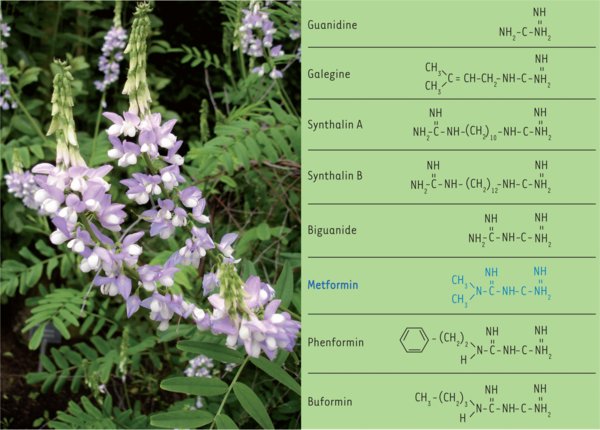Figure 1.

Télécharger l'image originale
Origin, history and chemical structure of metformin and related substances. Galega officinalis was used as a medicinal plant in the Middle Ages to treat the symptoms of diabetes mellitus. In the early 20th Century, the alkaloid galegine belonging to the guanidine family was isolated as the active substance of the galega plant. Galegine has antidiabetic properties, but its toxic effects soon became apparent. Synthalin A and synthalin B, containing two guanidine molecules linked by an alkyl chain, were both used in clinical practice in the 1920s, but were also abandoned because of their toxicity. These were followed by biguanides, derived from the condensation of two guanidine molecules. Metformin was described in 1929 and tested as an antidiabetic agent in humans in 1957 by Frenchman Jean Sterne. Two other biguanides, phenformin and buformin, were used around the same time, but were withdrawn from the market as a result of their high risk of fatal acidosis. Metformin is the only drug in the biguanide class and is today the oral antidiabetic of choice for the treatment of type 2 diabetes. Photograph: Wikimedia commons, Epibase.
Current usage metrics show cumulative count of Article Views (full-text article views including HTML views, PDF and ePub downloads, according to the available data) and Abstracts Views on Vision4Press platform.
Data correspond to usage on the plateform after 2015. The current usage metrics is available 48-96 hours after online publication and is updated daily on week days.
Initial download of the metrics may take a while.




